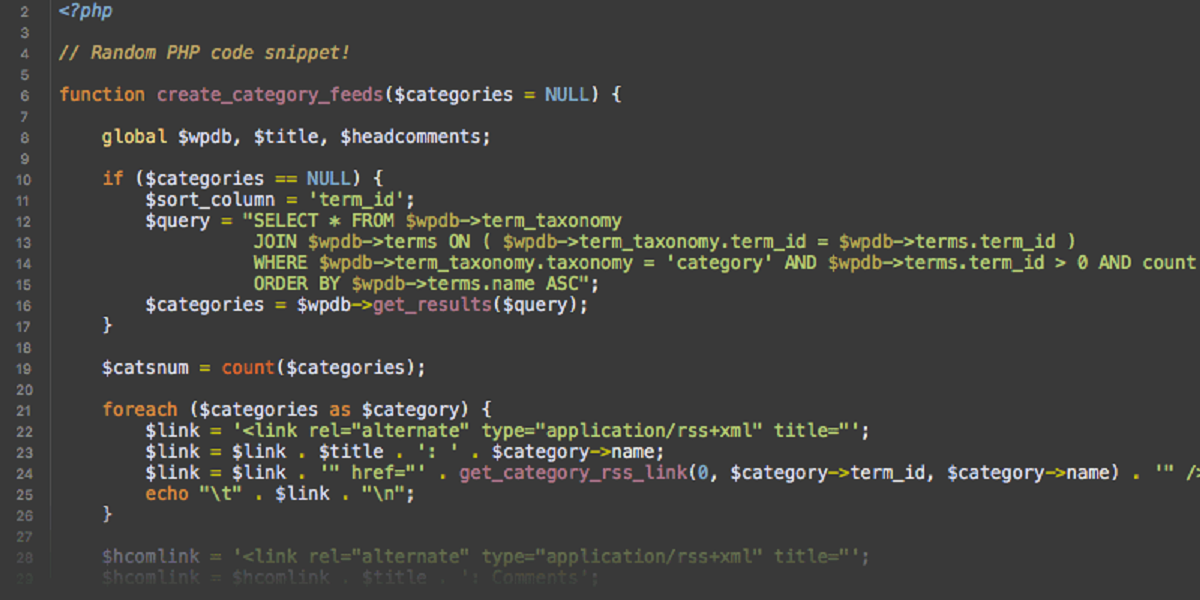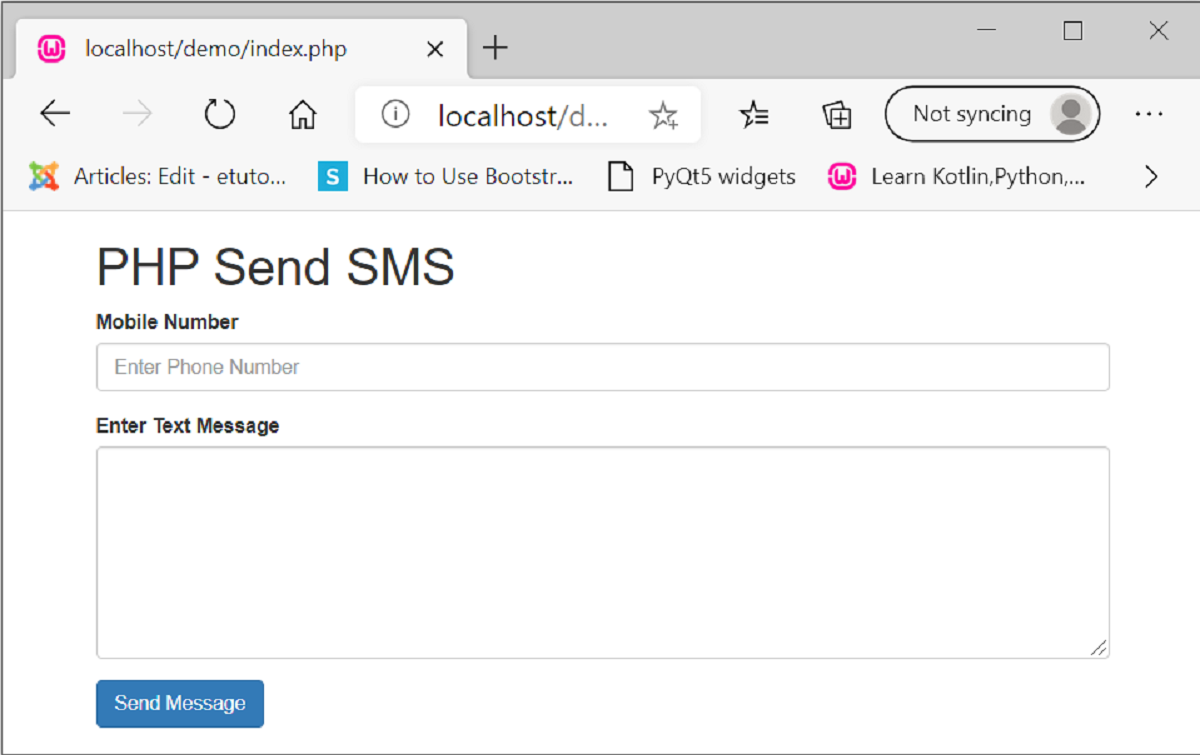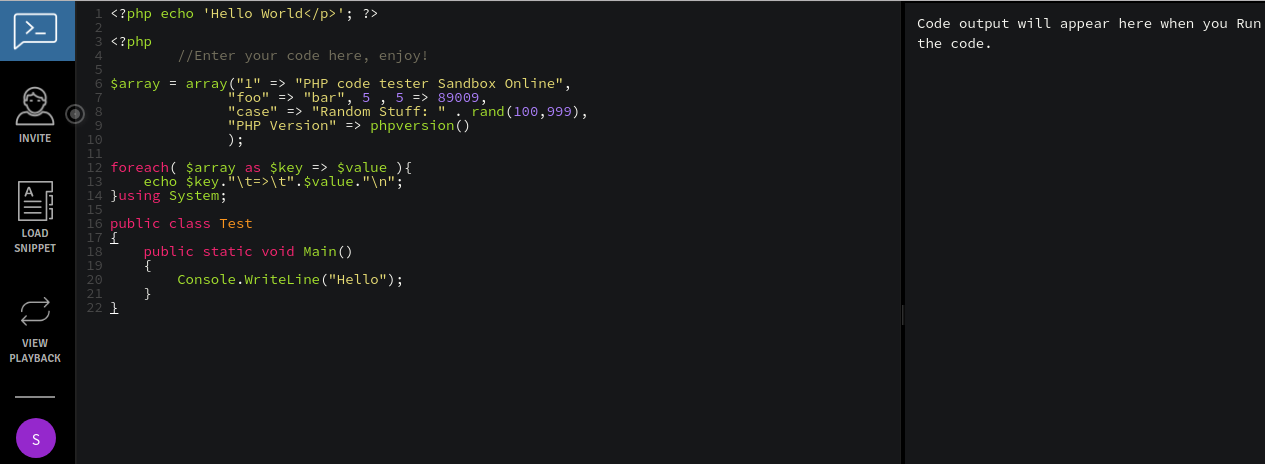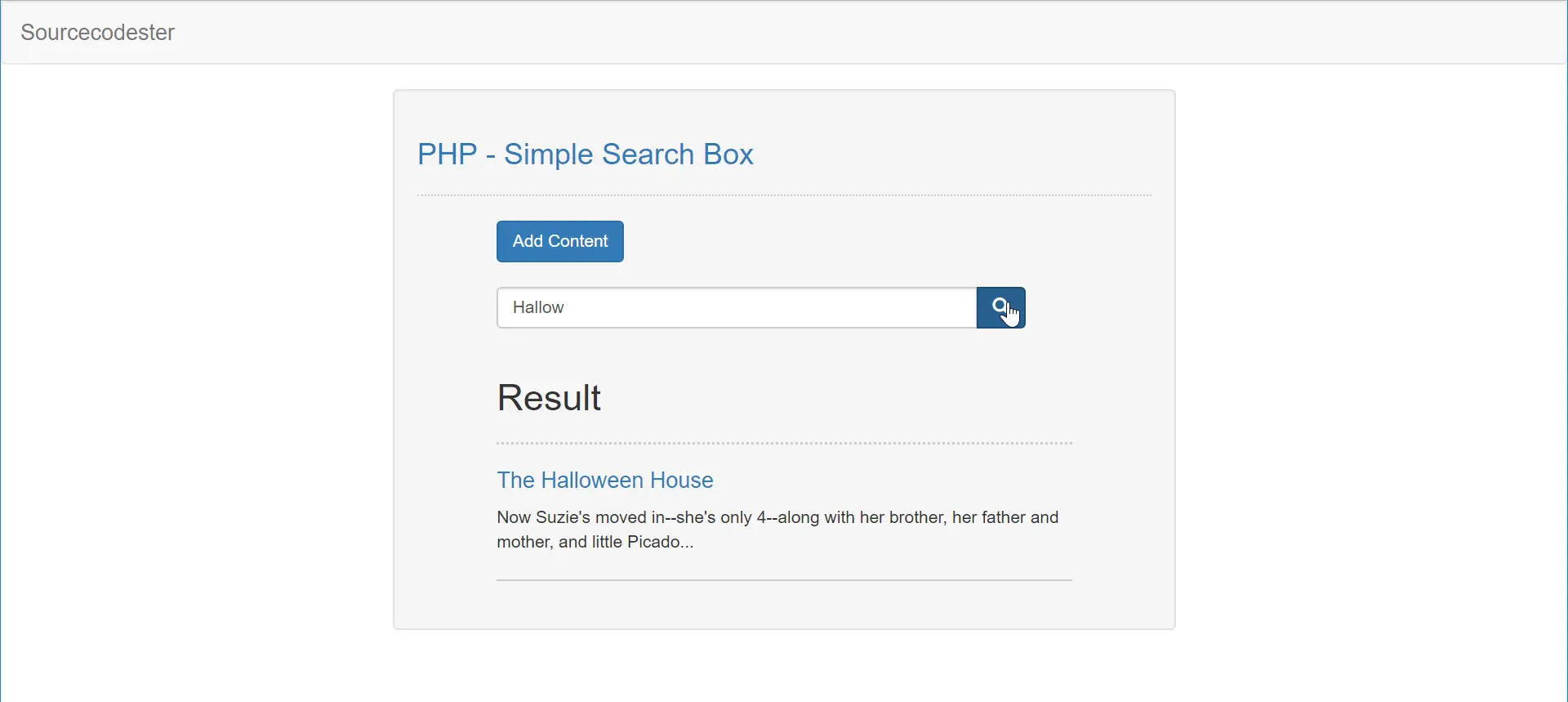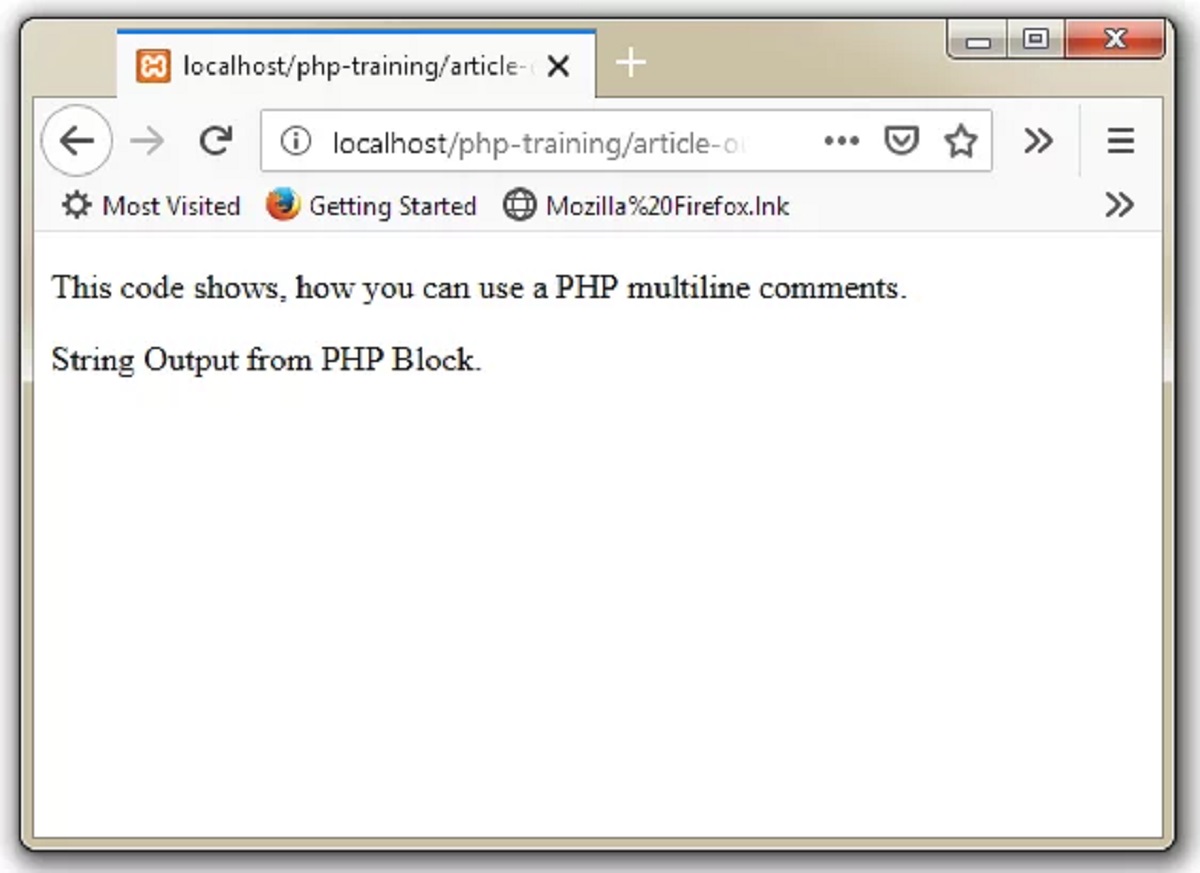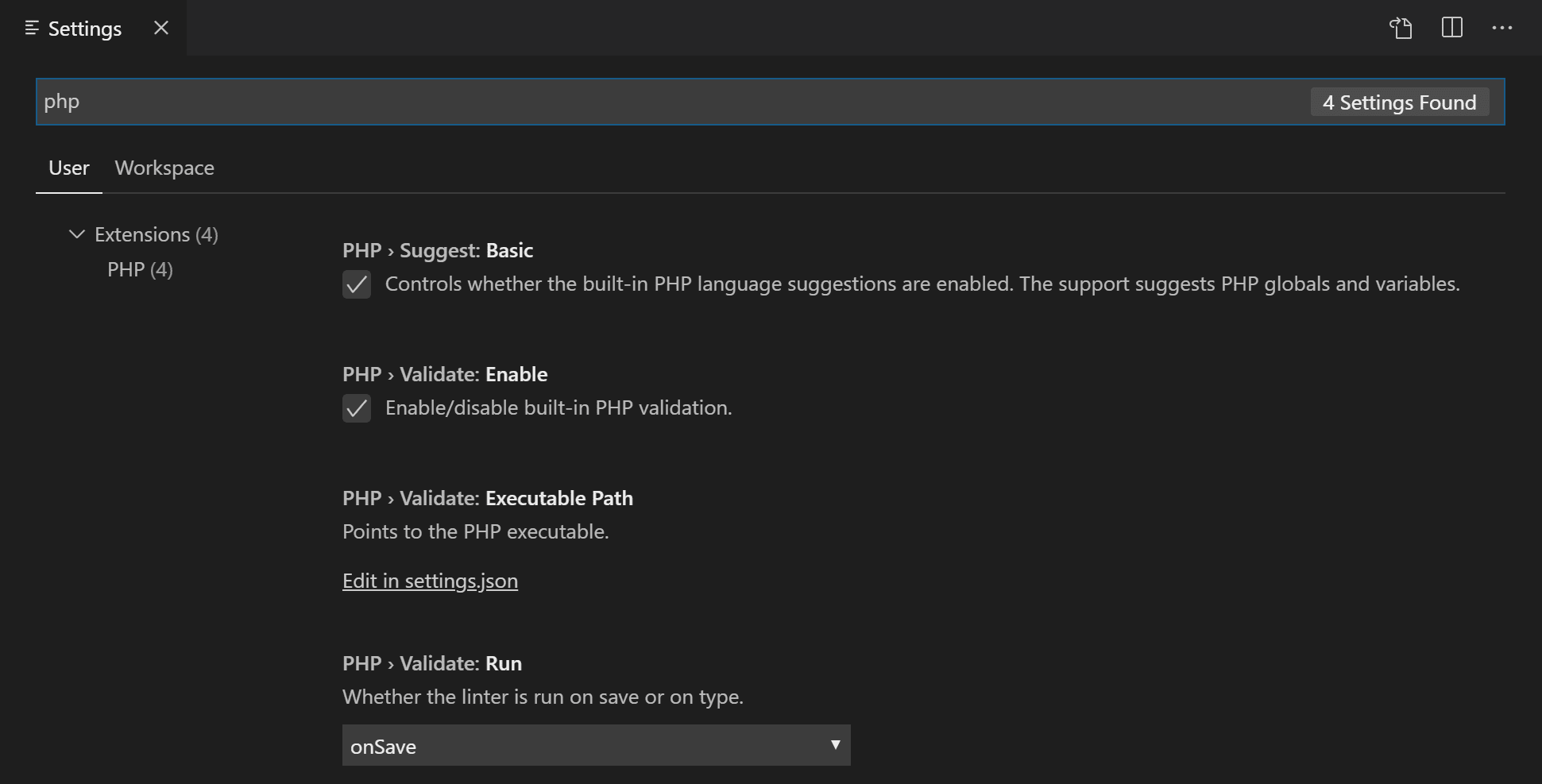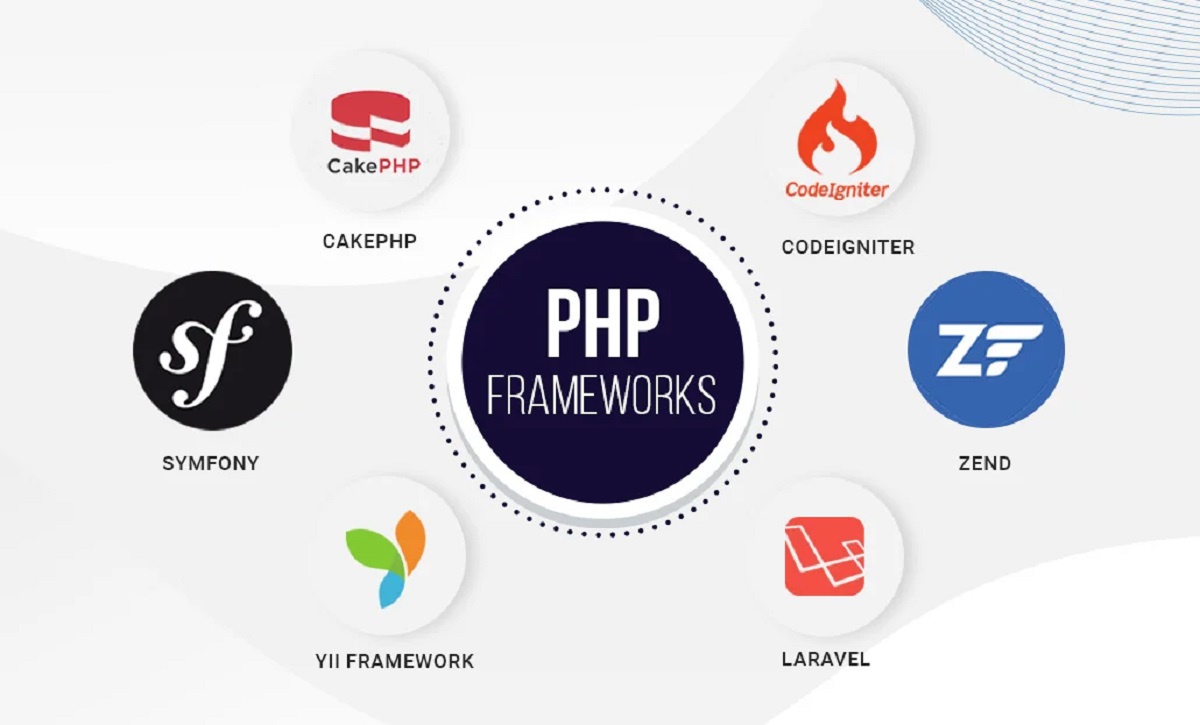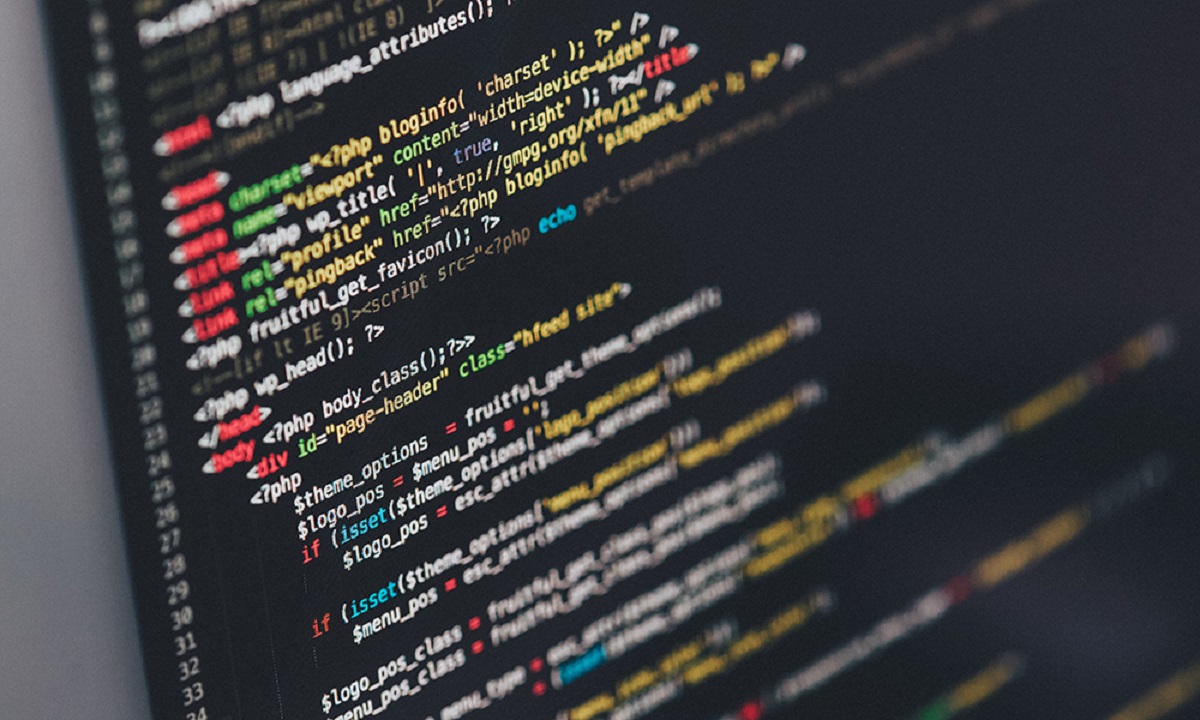Introduction
When it comes to creating dynamic and interactive websites, PHP is one of the most popular programming languages you can use. Whether you are a beginner or an experienced developer, having a solid understanding of PHP is essential to building robust web applications.
This article will guide you through the fundamentals of PHP programming, providing you with a comprehensive overview of the language. From setting up your PHP environment to working with databases and handling user input, you will gain the knowledge and skills needed to write efficient and secure PHP code.
Whether you want to create a personal blog, an e-commerce website, or a complex web application, this article will help you get started on your PHP coding journey. By the end, you will have a solid foundation in PHP and be ready to take on more advanced coding challenges.
To make the most of this article, it is recommended that you have a basic understanding of HTML and CSS. Familiarity with other programming languages, such as JavaScript, will also be beneficial but is not required.
Throughout this article, we will cover various topics, including the basic syntax of PHP, working with variables and data types, using control structures, implementing object-oriented programming, and working with databases. We will also explore security best practices to ensure the integrity and safety of your PHP applications.
So, whether you are a complete beginner or looking to expand your programming skills, let’s dive into the world of PHP and discover how to write clean, efficient, and secure PHP code.
Setting Up Your PHP Environment
Before you can start writing PHP code, you need to set up a development environment on your computer. There are a few essential components you will need:
- Web Server: PHP requires a web server to interpret and execute its code. One of the most popular web servers is Apache, which you can easily install on your local machine.
- PHP Engine: You will need to download and install the PHP engine on your computer. The official PHP website provides pre-built binaries for different operating systems, making it easy to install PHP.
- Database: If you plan on working with databases in your PHP applications, you will need to install a database management system like MySQL. This will allow you to store and retrieve data from your PHP scripts.
Once you have these components installed, you can test your PHP environment by creating a basic PHP file. Create a new file with a .php extension, and open it in a text editor. Simply add the following code:
<?php
echo "Hello, PHP!";
?>
Save the file and place it in the document root of your web server. Now, open your web browser and navigate to the file’s URL (e.g., http://localhost/myfile.php). If everything is set up correctly, you should see the message “Hello, PHP!” displayed in your browser.
Setting up a development environment for PHP can be a simple process, especially with the availability of tools like XAMPP and WAMP, which provide an all-in-one package with Apache, PHP, and MySQL.
Remember to keep your PHP environment up to date by regularly installing updates and patches released by the PHP community. This ensures that your development environment remains secure and optimized for performance.
Now that your PHP environment is ready to go, you are all set to start coding in PHP. In the next section, we will dive into the basic syntax of PHP and explore how you can write your first PHP script.
Basic Syntax of PHP
Now that you have set up your PHP environment, it’s time to explore the basic syntax of PHP. Understanding the syntax is crucial for writing clean and effective PHP code.
Similar to other programming languages, PHP code is written inside tags. These tags indicate the start and end of a PHP script. For example:
<?php
// Your PHP code goes here
?>
PHP statements should end with a semicolon (;), which acts as a line terminator, indicating the end of a statement. This helps the PHP interpreter understand where one statement ends and the next one begins. For example:
<?php
$name = "John";
$age = 25;
?>
PHP variables are declared with a dollar sign ($) followed by the variable name. Variables in PHP are loosely typed, meaning you don’t need to declare their data type explicitly. PHP will automatically infer the data type based on the value assigned to the variable.
PHP also supports a variety of operators, including arithmetic operators (+, -, *, /), assignment operators (=, +=, -=), comparison operators (==, !=, >, <, etc.), and logical operators (&&, ||, !). These operators allow you to perform mathematical calculations, assign values to variables, compare values, and evaluate logical conditions.
You can also use comments in PHP to provide explanatory notes within your code. PHP supports both single-line comments starting with // and multi-line comments enclosed in /* */.
Furthermore, PHP offers a range of built-in functions that you can use to manipulate strings, perform mathematical operations, handle arrays, and work with dates and times. These functions save you time and effort by providing pre-built functionality, allowing you to focus on solving business problems.
As you become more comfortable with the basic syntax of PHP, you can explore more advanced concepts such as conditional statements, loops, arrays, and functions. These concepts will further enhance your ability to write dynamic and complex PHP code.
Now that you have a good understanding of the basic syntax of PHP, let’s move on to the next section where we will explore variables and data types in PHP.
Variables and Data Types in PHP
In PHP, variables are used to store and manipulate data. Variables are declared by using the dollar sign ($) followed by the variable name. Here’s an example:
<?php
$name = "John";
$age = 25;
?>
PHP is a loosely typed language, which means you don’t need to explicitly declare the data type of a variable. PHP will automatically assign the appropriate data type based on the value you assign to it.
Some of the commonly used data types in PHP include:
- String: Represents a sequence of characters, such as names, addresses, or any other textual data. Strings can be enclosed in single quotes (”) or double quotes (“”).
- Integer: Represents whole numbers, both positive and negative.
- Float: Represents numbers with decimal points, commonly known as floating-point or real numbers.
- Boolean: Represents a logical value, either true or false.
- Array: Represents a collection of data, which can be of different data types and accessed using indices or keys.
- Object: Represents a real-world object with its properties and methods. Objects are created from classes.
- NULL: Represents a variable with no value assigned to it.
PHP also provides various functions to convert one data type into another, such as converting a string to an integer or vice versa. These type-conversion functions allow you to manipulate and utilize data in different formats as needed.
It’s important to note that PHP variables are case-sensitive. “name” and “Name” are considered two different variables in PHP.
You can output the value of a variable using the echo statement. This allows you to display the value of a variable or a combination of strings and variables. For example:
<?php
$name = "John";
$age = 25;
echo "My name is " . $name . " and I am " . $age . " years old.";
?>This will output: “My name is John and I am 25 years old.” on the webpage. The dot (.) operator is used to concatenate strings in PHP.
Understanding variables and data types in PHP is essential for storing and manipulating data in your PHP applications. In the next section, we will explore operators in PHP and how they can be used for performing various operations.
Operators in PHP
Operators in PHP are used to perform operations on variables and values. PHP provides a wide range of operators that allow you to carry out arithmetic calculations, compare values, assign values to variables, and evaluate logical conditions.
Let’s explore some of the commonly used operators in PHP:
- Arithmetic Operators: These operators are used to perform basic mathematical operations such as addition (+), subtraction (-), multiplication (*), division (/), and modulus (%).
- Assignment Operators: These operators are used to assign values to variables. The most common assignment operator is the equal sign (=), but PHP also provides compound assignment operators such as +=, -=, *=, /=, etc., which combine arithmetic operations with assignment in a single statement.
- Comparison Operators: These operators are used to compare values and return a boolean result. Some commonly used comparison operators include == (equal to), != (not equal to), > (greater than), < (less than), etc.
- Logical Operators: These operators are used to evaluate logical conditions and return a boolean result. PHP provides logical operators such as && (logical AND), || (logical OR), and ! (logical NOT).
- String Operators: PHP provides the concatenation operator (.) to concatenate two or more strings together. For example, “Hello, ” . “world!” will result in “Hello, world!”.
- Increment and Decrement Operators: These operators are used to increment or decrement the value of a variable by one. PHP provides both pre-increment (++$x) and post-increment ($x++), as well as pre-decrement (–$x) and post-decrement ($x–) operators.
- Ternary Operator: The ternary operator ( ?: ) is a shorthand way of writing an if-else statement and is used to assign a value to a variable based on a condition. For example, $result = ($x > 5) ? “Greater than 5” : “Less than or equal to 5”;
By using these operators effectively, you can perform calculations, make decisions, and manipulate values in your PHP code. Understanding and mastering these operators will greatly enhance your ability to write efficient and dynamic PHP programs.
In the next section, we will explore control structures in PHP, including if, else, and switch statements, which allow you to make decisions and control the flow of your PHP code.
Control Structures: If, Else, and Switch Statements
Control structures in PHP allow you to make decisions and control the flow of your code based on certain conditions. The most commonly used control structures are if, else, and switch statements.
If statement: The if statement is used to execute a block of code if a specified condition is true. It has the following syntax:
<?php
if(condition) {
// Execute this code if the condition is true
}
?>For example:
<?php
$age = 25;
if($age > 18) {
echo "You are an adult.";
}
?>In this example, if the value of the variable “$age” is greater than 18, the message “You are an adult.” will be displayed.
Else statement: The else statement is used in conjunction with the if statement to execute a block of code if the condition in the if statement is false. The syntax is as follows:
<?php
if(condition) {
// Execute this code if the condition is true
} else {
// Execute this code if the condition is false
}
?>For example:
<?php
$age = 15;
if($age > 18) {
echo "You are an adult.";
} else {
echo "You are a minor.";
}
?>In this example, if the value of the variable “$age” is less than or equal to 18, the message “You are a minor.” will be displayed.
Switch statement: The switch statement is used to perform different actions based on different conditions. It provides an alternative to using multiple if-else statements. The syntax is as follows:
<?php
switch(expression) {
case value1:
// Execute this code if expression equals value1
break;
case value2:
// Execute this code if expression equals value2
break;
default:
// Execute this code if expression does not match any cases
break;
}
?>For example:
<?php
$day = "Monday";
switch($day) {
case "Monday":
echo "Today is Monday.";
break;
case "Tuesday":
echo "Today is Tuesday.";
break;
default:
echo "It's neither Monday nor Tuesday.";
break;
}
?>In this example, if the value of the variable “$day” is “Monday”, the message “Today is Monday.” will be displayed. If the value is “Tuesday”, the message “Today is Tuesday.” will be displayed. If the value does not match any of the cases, the message “It’s neither Monday nor Tuesday.” will be displayed.
By using if, else, and switch statements effectively, you can control the flow of your PHP code and handle different scenarios based on specific conditions.
In the next section, we will explore loops in PHP, including for, while, and do-while loops, which allow you to repeat a block of code multiple times.
Loops: For, While, and Do-While
Loops in PHP allow you to execute a block of code repeatedly as long as a certain condition is met. PHP provides three main types of loops: for, while, and do-while loops.
For loop: The for loop is used when you know the number of iterations in advance. It has the following syntax:
<?php
for(initialization; condition; increment/decrement) {
// Code to be executed
}
?>For example:
<?php
for($i = 0; $i < 5; $i++) {
echo $i . " ";
}
?>In this example, the for loop will run 5 times, with the variable "$i" starting from 0 and incrementing by 1 on each iteration. The output will be "0 1 2 3 4".
While loop: The while loop is used when you don't know the number of iterations in advance and want to loop as long as a condition is true. It has the following syntax:
<?php
while(condition) {
// Code to be executed
}
?>For example:
<?php
$i = 0;
while($i < 5) {
echo $i . " ";
$i++;
}
?>In this example, the while loop will continue to run as long as the variable "$i" is less than 5. The output will be "0 1 2 3 4".
Do-While loop: The do-while loop is similar to the while loop, but it guarantees that the code block is executed at least once before the condition is checked. It has the following syntax:
<?php
do {
// Code to be executed
} while(condition);
?>For example:
<?php
$i = 0;
do {
echo $i . " ";
$i++;
} while($i < 5);
?>In this example, the do-while loop will run at least once, as the condition is checked after the code block is executed. The output will be "0 1 2 3 4".
Loops are powerful tools in PHP that allow you to automate repetitive tasks and iterate through data structures. By using loops effectively, you can efficiently process and manipulate large amounts of data.
In the next section, we will explore arrays and functions in PHP, which are fundamental concepts for organizing and reusing code effectively.
Arrays and Functions in PHP
Arrays and functions are essential components of PHP that allow you to organize and reuse code effectively.
Arrays: In PHP, an array is a versatile data structure that can store multiple values of different data types. You can access the elements of an array by using their indices. Arrays in PHP can be created using the array() function or by using the shorthand syntax []. Here's an example:
<?php
// Creating an array using the array() function
$fruits = array("Apple", "Banana", "Orange");
// Creating an array using the shorthand syntax
$numbers = [1, 2, 3, 4, 5];
// Accessing elements of an array
echo $fruits[0]; // Output: Apple
echo $numbers[2]; // Output: 3
// Modifying elements of an array
$fruits[1] = "Mango";
$numbers[3] = 10;
?>Arrays are immensely useful for managing collections of data, such as a list of names or a set of numerical values. They can be dynamically resized and manipulated using various built-in PHP functions.
Functions: Functions in PHP allow you to encapsulate a block of code, give it a name, and reuse it throughout your application. Functions are defined using the function keyword, followed by the name of the function and parentheses. Here's an example:
<?php
// Defining a function
function sayHello() {
echo "Hello, world!";
}
// Calling the function
sayHello();
?>Output: Hello, world!
Functions can accept parameters, allowing you to pass values to them and customize their behavior. They can also return values using the return keyword. Here's an example:
<?php
// Function with parameters
function addNumbers($num1, $num2) {
return $num1 + $num2;
}
// Calling the function
$sum = addNumbers(5, 10);
echo $sum; // Output: 15
?>Functions are powerful tools for organizing your code, improving code reusability, and promoting modular design. They help make your code more readable, maintainable, and efficient.
In addition to built-in functions, PHP allows you to define your own custom functions. This gives you the flexibility to create functions tailored to your specific needs and requirements.
Understanding arrays and functions in PHP is essential for effective code organization, data manipulation, and code reuse. In the next section, we will explore working with strings in PHP, including string manipulation and formatting.
Working with Strings in PHP
Strings are a fundamental data type in PHP used to represent text and character data. PHP provides a wide range of built-in functions and operators to manipulate and work with strings efficiently.
String Concatenation: In PHP, you can concatenate strings using the dot (.) operator. This allows you to combine multiple strings together. Here's an example:
<?php
$greeting = "Hello";
$name = "John";
$message = $greeting . ", " . $name . "!";
echo $message; // Output: Hello, John!
?>String Length: You can determine the length of a string using the strlen() function. It returns the number of characters in a string, including spaces and special characters. Here's an example:
<?php
$text = "This is a sample text.";
$length = strlen($text);
echo $length; // Output: 20
?>String Case Manipulation: PHP provides functions to change the case of strings. You can convert a string to uppercase using the strtoupper() function or to lowercase using the strtolower() function. Here's an example:
<?php
$text = "Hello, World!";
$uppercase = strtoupper($text);
echo $uppercase; // Output: HELLO, WORLD!
$lowercase = strtolower($text);
echo $lowercase; // Output: hello, world!
?>String Searching and Replacement: PHP provides functions to search for specific substring occurrences within a string and replace them. The strpos() function returns the position of the first occurrence of a substring, while the str_replace() function replaces all occurrences of a substring with another. Here's an example:
<?php
$text = "The quick brown fox jumps over the lazy dog.";
$position = strpos($text, "fox");
echo $position; // Output: 16
$newText = str_replace("fox", "cat", $text);
echo $newText; // Output: The quick brown cat jumps over the lazy dog.
?>String Formatting: PHP provides functions to format strings based on specific patterns or formats. The printf() and sprintf() functions allow you to format strings with placeholders for variables. Here's an example:
<?php
$name = "John";
$age = 25;
printf("My name is %s and I am %d years old.", $name, $age);
// Output: My name is John and I am 25 years old.
$formattedString = sprintf("My name is %s and I am %d years old.", $name, $age);
echo $formattedString;
// Output: My name is John and I am 25 years old.
?>Working with strings in PHP is essential for manipulating and processing textual data in your applications. By utilizing the various string functions and operators, you can effectively handle and format strings according to your specific requirements.
In the next section, we will delve into working with forms and handling user input in PHP, allowing you to create interactive web applications.
Working with Forms and Handling User Input
Forms play a vital role in web development as they allow users to interact with websites by submitting data. In PHP, you can easily handle user input from forms and process it to perform various actions.
HTML Forms: HTML forms are used to collect user input. They consist of form elements such as text fields, checkboxes, radio buttons, and submit buttons. When a form is submitted, the data is sent to the server for processing.
To retrieve user input from form fields in PHP, you can use the $_POST or $_GET superglobal arrays. The $_POST array is commonly used for handling data submitted via the HTTP POST method, while the $_GET array is used for data submitted via the HTTP GET method.
Here's an example of retrieving user input from a form using the $_POST array:
<?php
if ($_SERVER["REQUEST_METHOD"] == "POST") {
$name = $_POST["name"];
$email = $_POST["email"];
echo "Welcome, " . $name . "! Your email is " . $email . ".";
}
?>Assuming the form has input fields named "name" and "email", this code will retrieve the values entered by the user and display a welcome message with their name and email.
Data Validation: It's crucial to validate user input to ensure its integrity and security. PHP provides various validation techniques, including checking for empty fields, validating email addresses, and sanitizing input to prevent code injection attacks.
You can use conditionals and built-in functions for validation purposes. Here's an example of validating a form field:
<?php
if ($_SERVER["REQUEST_METHOD"] == "POST") {
$name = $_POST["name"];
if (empty($name)) {
echo "Name field is required.";
} else {
// Process the data
}
}
?>In this example, if the name field is empty, an error message is displayed. Otherwise, the data is processed accordingly.
Security Considerations: When handling user input, it's essential to implement security measures to prevent malicious activities. You should always sanitize and validate user input to protect against SQL injections, XSS attacks, and other threats. Utilize PHP's built-in functions such as htmlspecialchars() and SQL prepared statements to prevent these vulnerabilities.
Handling user input from forms is a critical task in PHP development. By properly retrieving, validating, and securing user data, you can create robust and secure web applications.
In the next section, we will explore error handling and exception management in PHP, allowing you to handle and troubleshoot errors effectively.
Handling Errors and Exceptions in PHP
Handling errors and exceptions is an essential part of PHP development. Errors can occur during the execution of a script, and exceptions allow you to handle exceptional situations in a more controlled manner.
Error Reporting: In PHP, you can control the level of error reporting using the error_reporting directive in your PHP configuration file or dynamically in your code using the error_reporting() function. Setting error reporting to the appropriate level helps in identifying and resolving issues during development.
Basic Error Handling: PHP provides a set of built-in error handling functions such as trigger_error() and error_get_last() to capture and display errors. The trigger_error() function allows you to raise custom errors, while error_get_last() retrieves the last error that occurred in your script.
Exception Handling: Exceptions are a more structured way of handling errors and can be caught and handled using try-catch blocks. Exceptions are typically used for handling exceptional situations that may occur during the execution of code. Here's an example of exception handling:
<?php
try {
// Code that may throw an exception
throw new Exception("This is an exception.");
} catch (Exception $e) {
// Code to handle the exception
echo "Caught Exception: " . $e->getMessage();
}
?>In this example, if an exception is thrown within the try block, it is caught by the corresponding catch block, and the appropriate error message is displayed.
Error Logging: Logging errors and exceptions is crucial for debugging and monitoring purposes. PHP provides functions like error_log() and set_error_handler() that allow you to log errors and define custom error handlers to handle errors in your application.
Graceful Error Pages: To provide a better user experience, it's essential to present informative and user-friendly error pages when errors occur. PHP enables you to customize error pages using the set_error_handler() function and the trigger_error() function to redirect users to error pages when necessary.
Debugging Tools and Techniques: When troubleshooting errors, it can be helpful to use PHP debugging tools and techniques such as printing variable values using var_dump(), logging messages to a file, and using a PHP debugger like Xdebug.
Effective error handling and exception management are critical for identifying, resolving, and preventing issues in your PHP code. By implementing robust error handling practices, you can create more reliable and maintainable applications.
In the next section, we will explore using object-oriented programming (OOP) in PHP, allowing you to create modular and reusable code.
Using Object-Oriented Programming in PHP
Object-oriented programming (OOP) is a powerful paradigm in PHP that allows you to create modular and reusable code. With OOP, you can organize your code into objects, which are instances of classes that encapsulate data and behavior.
Classes and Objects: In PHP, a class is a blueprint or template that defines the properties (attributes) and methods (functions) of an object. Objects are instances of a class and represent real-world entities or concepts. Here's an example of a class and an object:
<?php
class Car {
public $color;
public $brand;
public function startEngine() {
echo "Engine started!";
}
}
// Creating an object of the Car class
$myCar = new Car();
$myCar->color = "Red";
$myCar->brand = "Tesla";
// Accessing properties and methods of the object
echo $myCar->color; // Output: Red
echo $myCar->brand; // Output: Tesla
$myCar->startEngine(); // Output: Engine started!
?>In this example, the Car class defines two properties: color and brand, and a method startEngine(). An object $myCar is created based on the Car class, and its properties and methods are accessed using the arrow (->) operator.
Encapsulation: Encapsulation is a principle of OOP that ensures that the internal workings of an object are hidden from external code. It enables you to encapsulate data and provides controlled access through methods, also known as getters and setters. This helps maintain data integrity and allows for easier code maintenance. Here's an example:
<?php
class Student {
private $name;
private $age;
public function getName() {
return $this->name;
}
public function setName($name) {
$this->name = $name;
}
public function getAge() {
return $this->age;
}
public function setAge($age) {
if ($age >= 0) {
$this->age = $age;
}
}
}
?>In this example, the name and age properties are marked as private to encapsulate them. Public getter and setter methods enable controlled access to these properties, ensuring that the object's internal state remains valid.
Inheritance: Inheritance is a key feature of OOP that allows classes to inherit properties and methods from other classes. It promotes code reuse and allows for hierarchies of classes. Here's an example:
<?php
class Animal {
public function eat() {
echo "Eating...";
}
}
class Dog extends Animal {
public function bark() {
echo "Woof!";
}
}
$dog = new Dog();
$dog->eat(); // Output: Eating...
$dog->bark(); // Output: Woof!
?>In this example, the Dog class extends the Animal class, inheriting its eat() method. The Dog class also has its own bark() method, which is specific to dogs.
Object-oriented programming provides a structured and modular approach to PHP development, making code more maintainable and flexible. By utilizing classes, objects, encapsulation, inheritance, and other OOP principles, you can create robust and efficient applications.
In the next section, we will explore working with databases and MySQL in PHP, allowing you to store and retrieve data.
Working with Databases and MySQL in PHP
Databases play a crucial role in web applications, and PHP provides robust support for interacting with databases, such as MySQL, to store and retrieve data. Working with databases allows you to create dynamic and data-driven applications.
Connecting to a Database: To connect to a MySQL database in PHP, you can use the mysqli or PDO extensions, which provide a range of functions and methods for database operations. Here's an example of connecting to a MySQL database using mysqli:
<?php
$host = "localhost";
$username = "your_username";
$password = "your_password";
$database = "your_database";
$connection = new mysqli($host, $username, $password, $database);
// Check connection
if ($connection->connect_error) {
die("Connection failed: " . $connection->connect_error);
}
echo "Connected successfully!";
?>Executing Queries: Once connected, you can execute SQL queries to perform operations on the database, such as selecting, inserting, updating, and deleting data. The mysqli library provides various methods for executing queries, including query(), prepare(), and execute().
Fetching Data: After executing a SELECT query, you can retrieve data from the result set. The fetch_assoc() method in mysqli fetches a row as an associative array, allowing you to access the columns by their names. Here's an example of fetching data:
<?php
$query = "SELECT * FROM users";
$result = $connection->query($query);
if ($result->num_rows > 0) {
while ($row = $result->fetch_assoc()) {
echo "Name: " . $row["name"] . " Email: " . $row["email"];
}
} else {
echo "No results found.";
}
?>Prepared Statements: When working with user input or handling sensitive data, it's crucial to utilize prepared statements to prevent SQL injection attacks. Prepared statements allow you to bind parameters to a query, ensuring the safe and secure execution of database operations.
Error Handling: When interacting with databases, you should handle errors properly to handle exceptions and troubleshoot issues effectively. The mysqli library provides functionalities to catch and handle database-related errors, such as using mysqli_error() to retrieve error messages.
Working with databases and MySQL in PHP opens up endless possibilities for creating dynamic and data-driven applications. Whether you're building an e-commerce site, a content management system, or a complex web application, mastering database interactions in PHP is essential for successful development.
In the next section, we will explore security best practices in PHP, ensuring the integrity and safety of your applications and user data.
Security Best Practices in PHP
Security is a critical aspect of web development, and PHP provides several best practices to ensure the integrity and safety of your applications and user data. Implementing these practices helps protect against common security vulnerabilities and potential attacks.
1. Input Validation and Filtering: Always validate and filter user input to prevent malicious data from being processed. Use functions like filter_input() and htmlspecialchars() to sanitize user input and avoid SQL injection and cross-site scripting (XSS) attacks.
2. Parameterized Queries: Utilize prepared statements or query parameterization techniques to prevent SQL injection attacks. Avoid directly injecting user input into SQL queries and instead use placeholders and bound parameters.
3. Password Hashing: Never store user passwords in plaintext. Use hashing algorithms like bcrypt or Argon2 for password hashing and store the hashed passwords in your database. Additionally, use a suitable salt value for added security.
4. Cross-Site Scripting (XSS) Prevention: Use appropriate output encoding techniques, such as htmlspecialchars(), when displaying user-generated content to prevent XSS attacks. Ensure that user input is properly validated and sanitized before being displayed.
5. Cross-Site Request Forgery (CSRF) Protection: Implement CSRF tokens to protect against CSRF attacks. Generate unique tokens for each user session and include them in form submissions or AJAX requests. Verify the token on the server side to validate the request.
6. Secure Session Management: Use secure session management techniques to protect session data. Enable secure session cookies, regenerate session identifiers, and enforce session expiration to mitigate session hijacking and session fixation attacks.
7. File and Directory Permissions: Set appropriate file and directory permissions on your web server to restrict unauthorized access. Ensure that sensitive files and directories are not accessible to the public, and restrict write permissions where necessary.
8. Input Data and Output Encoding: Practice adequate data and output encoding to prevent security vulnerabilities. Implement context-aware encoding techniques like HTML entity encoding, URL encoding, and JavaScript escaping to protect against code injection attacks.
9. Secure File Uploads: Validate and sanitize file uploads to prevent security risks. Limit the file types and size that can be uploaded, verify the file content, and store the files outside the web root directory to prevent execution of malicious scripts.
10. Regular Updates and Patches: Keep your PHP version, web server, and other libraries up to date with the latest security patches. Regularly check for security updates and apply them promptly to mitigate any known vulnerabilities.
11. Secure Configuration: Ensure that your PHP configuration is properly secured. Disable unnecessary PHP functions, enable error reporting only in development environments, and prevent sensitive information from being exposed in error messages.
By following these security best practices, you can significantly enhance the security of your PHP applications and protect the confidentiality, integrity, and availability of your data and systems.
Conclusion
PHP is a versatile and powerful language for web development, and mastering its core concepts and best practices is essential for writing efficient, secure, and maintainable code. In this article, we covered a wide range of topics, from setting up a PHP environment and understanding basic syntax to working with databases, handling user input, and implementing security measures.
We explored the importance of setting up a proper PHP environment, understanding the language's basic syntax, and working with variables, data types, and operators. We also delved into control structures, including if, else, and switch statements, as well as loops such as for, while, and do-while, which allow you to control the flow of your code and perform repetitive tasks.
Furthermore, we discussed the significance of arrays and functions in PHP, which enable code organization and reusability. We explored string manipulation techniques, form handling, error and exception management, object-oriented programming (OOP), and working with databases and MySQL. Lastly, we emphasized security best practices to protect your applications and user data from potential vulnerabilities.
By applying these concepts and best practices in your PHP projects, you can create robust, efficient, and secure web applications that meet your specific requirements. As you continue to learn and explore the vast capabilities of PHP, remember to stay updated with the latest trends and advancements in the PHP community to further enhance your skills.
Now it's time to put your knowledge into practice and embark on your PHP development journey. Have fun coding and happy PHP programming!







